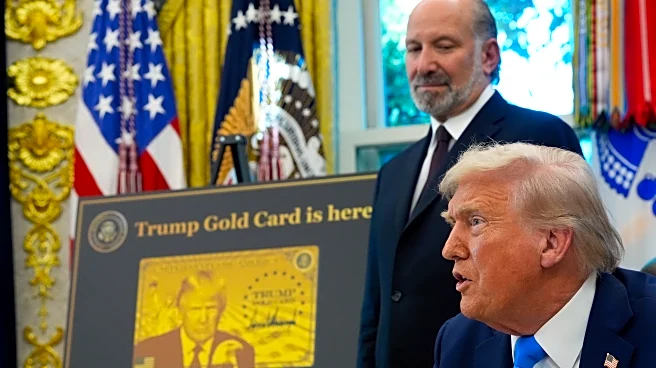What's Happening?
The White House is addressing confusion surrounding recent changes to the H-1B visa fee structure. Commerce Secretary Howard Lutnick initially announced that applications would incur a $100,000 annual fee. However, the White House press secretary later clarified that this is a one-time fee for each petition, not an annual charge. This clarification comes as businesses and applicants express concern over the potential financial impact of the new fee structure, which could affect the ability of companies to hire skilled foreign workers.
Why It's Important?
The H-1B visa program is crucial for U.S. companies, particularly in the technology sector, as it allows them to hire skilled foreign workers. The initial announcement of a $100,000 annual fee raised concerns about increased costs for businesses, potentially limiting their ability to recruit international talent. The clarification of the fee as a one-time charge alleviates some of these concerns, but the high cost may still impact smaller companies and startups. This development is significant as it affects the U.S. labor market and the country's competitiveness in attracting global talent.
What's Next?
Businesses and applicants are likely to closely monitor any further changes or clarifications regarding the H-1B visa fee structure. Companies may need to adjust their hiring strategies and budgets to accommodate the new fee. Additionally, there may be discussions or lobbying efforts from industry groups to address the financial implications of the fee and advocate for more favorable terms. The White House may continue to provide updates to ensure transparency and understanding of the new policy.
Beyond the Headlines
The introduction of a substantial fee for H-1B visa petitions could have broader implications for immigration policy and the U.S. workforce. It may influence the debate on immigration reform and the balance between protecting domestic jobs and attracting foreign talent. The fee structure could also impact the diversity and innovation within U.S. industries, as companies may face challenges in accessing a global pool of skilled workers.











